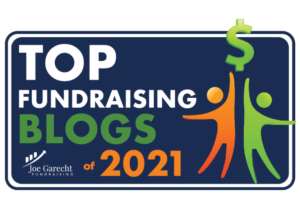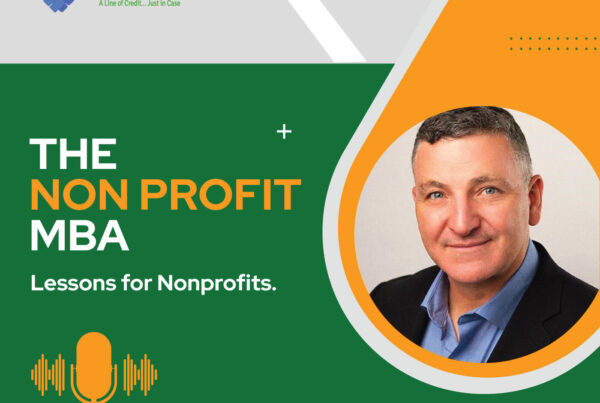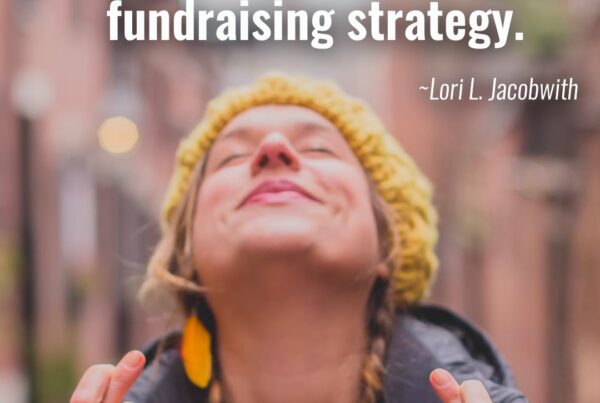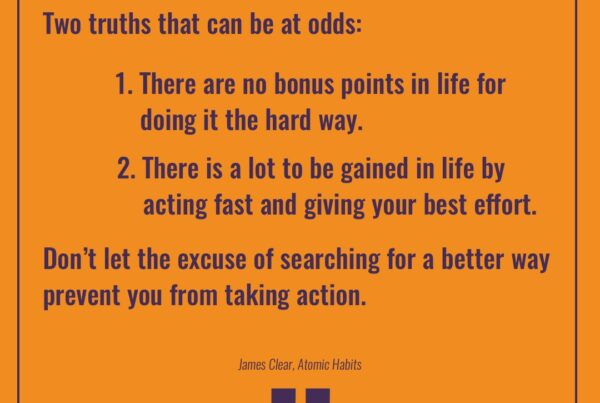This week I’ve got a special guest post by John Killoran, inventor, entrepreneur, and the Chairman of Clover Leaf Solutions, a national lab services company.
Storytelling can level up your fundraising campaigns by appealing to your donors’ emotions and fostering their connection with your mission. When donors resonate with your cause, they’re far more likely to donate (and continue donating in the future).
This is why implementing storytelling as a strategy and learning to make it personal for individual supporters is so important.

While we tend to think of storytelling in one specific way, it comes in a variety of forms and is essential to building your brand identity. With the decreased face-to-face time everyone has experienced during the pandemic, storytelling to create an emotional connection has become even more crucial. Your fundraising software can be an incredibly powerful tool to improve your storytelling and subsequently, your fundraising.
With the right fundraising software, you can tell better stories through your online fundraising when you:
- Segment your donors.
- Report interesting data.
- Use multi-channel marketing.
- Maintain consistency and post updates.
- Ask your supporters to share their own stories.
Keep reading to learn how to better utilize your fundraising software to improve your brand identity and help you connect with your donors through storytelling.
Segment Your Donors
Personalizing your message makes your cause more compelling and better engages your donors. The challenge, however, is that personalizing your messages to your entire base of support is a major (if not impossible) task. That’s where segmentation comes in.
Fundraising software makes it simple to categorize your donors based on factors such as age, gift size, location, and more. The benefit of segmenting your donors is that you can adjust the story you’re telling to better match their characteristics and appeal to that audience.
There are several different ways to segment your donors and adjust your marketing strategy. Here are a few of the most common examples:
- Age: Younger donors have different donation habits than older donors and are more likely to connect with different types of stories. According to 360MatchPro, millennials are 90% more likely to donate to a cause with a compelling mission and are more likely to donate if their peers are already doing so. Understanding demographic features like this can help you craft your message to deliver the highest impact.
- Location: Depending on their location, there may be a local tie-in or comparison to draw through your storytelling that helps create a more personal connection to your cause. Plus, knowing where your donors are located makes it much easier to invite them to any relevant in-person engagement opportunities that you might offer.
- Gift Size: Donors who make bigger or smaller donations are likely to be focused on different aspects of your mission and will connect to different types of stories. Consider what parts of your mission and what kind of success stories will motivate them most to donate again. Emphasize stories or parts of stories that focus on those areas.
Your fundraising software will be a huge asset in figuring out when and how to personalize stories to create a stronger connection to your mission among your donor base. By tracking donor and donation data over time, you’ll develop a complete picture of who your donors are and how they like to engage with your mission. Without dedicated fundraising software, tracking and studying this kind of data manually is logistically complicated and time-consuming.
Report Interesting Data
Using numbers and data in your storytelling is an easy way to make your story more impactful. It can also be useful for motivating your donors and helping them understand how their donations can make a difference. Using your fundraising software to gather this data to share with your donors can show them the value of their donations.
One way that you can utilize data to motivate supporters is by sharing how close you are to your fundraising goals. This is just one idea from Snowball Fundraising’s list of Giving Tuesday ideas that you can employ to maximize the impact of your appeals leading up to big giving days and campaigns.
It can also be effective to break down what each contribution can do. Sharing the impact of a specific dollar amount can help potential donors visualize where their money is going. Combining this data with qualitative storytelling of what your organization does with donations also helps build trust between you and your supporters.
It’s important to remember that donors will not always immediately understand your cause and its importance at the level that you do – it’s your job to help them understand. Using data to show your supporters the impact of their donations in this way makes it much clearer to them why they should donate. The more context you give, the more likely they are to connect with your cause.
Use Multi-Channel Marketing
Similar to donor segmentation, you should utilize your different channels for marketing to tell your story in different ways. Differentiating the way you reach out to your donor base is an essential part of making sure that your fundraising campaign is set up for success.
Fundraising software and the rise of marketing tools and platforms have thankfully made this process easier than ever. Here are a few ways to incorporate storytelling into different communication channels:
- Direct mail: The letters you send to donors are a great opportunity to include stories and examples of what their donation dollars can do for your cause.
- Social media: This is one of the easiest ways to craft a brand identity through storytelling. Create a strong strategy for sharing stories and relevant content on your social media accounts.
- Email: Similar to direct mail, your regular emails to your donor base are a good place to include storytelling elements, whether directly from your organization or through stories from donors themselves.
- Branded spaces: By implementing experiential design and environmental storytelling strategies, you can put your physical space to use to show your guests what your nonprofit is all about.
- Website: Keeping your website updated with stories of the impact that your nonprofit is making is essential to incentivizing visitors to donate. Compelling stories that emphasize the difference that your organization is making should be a main feature of your website.
Fundraising software and other marketing platforms can consolidate your marketing materials for each of these channels in one place, which can keep everything organized.
Maintain Consistency & Post Updates
Even though 87% of donors who donate for the first time from a social referral source will also make their second donation from a social referral source, only 40% of nonprofits have a written social media strategy, according to the 360MatchPro resource cited above. This is why it’s crucial to not only share your story but to share it consistently. You want your story to feel so familiar to supporters that it almost feels like their own.
Here are a few tips to get you started on building a consistent social media strategy:
- Plan content ahead of time: This is essential for ensuring that you maintain a strategy and post consistently. It’s easier to fall behind if you’re always creating content day-of instead of having content ready to go.
- Use interesting graphics: A great example of this is a visual fundraising tracker. Good visuals will capture people’s attention on social media and graphics like a visual tracker are very shareable.
- Create a posting schedule: A regular schedule for posting on social media will be perceived as a more reliable and stronger online presence by your followers and can foster engagement as your followers begin to know what to expect from your account.
- Break up a story into “chapters”: This will not only help you create more content more easily, it also optimizes content you’ve created for other channels for social media. Bite-sized pieces of content will help keep your followers engaged and interested in the rest of the story.
Ultimately, sharing content consistently keeps your nonprofit top of mind and engages your donor base. A strong social media strategy can help you achieve this while creating a familiar brand identity. Fundraising software, social media schedulers, and other marketing tools can all streamline the process of telling your story in a consistent, organized, and engaging way.
Ask Your Supporters to Share Their Own Stories
Telling your organization’s story through your main marketing channels is always an effective choice , but getting your supporters to tell their own stories can be even more compelling. Asking supporters to share their stories and why they donate to your cause can simultaneously reassert their commitment to your nonprofit while convincing others to also give their support.
These personal stories can be shared in a variety of ways, from social media posts to “donor spotlights” in emails or virtual fundraising events, like educational webinars or Q&A sessions.
Some supporters that you could ask to speak at a virtual event might be:
- Volunteers
- Long-time donors
- Donors with a personal connection to the cause
These individuals are ideal storytellers for your mission thanks to the concept of “social proof,” which is the idea that new supporters are much more likely to get involved or make a donation when they hear about your organization from a loved one. This is part of the reason why peer-to-peer fundraising has become such a major trend in the nonprofit space, but the same idea applies to any type of marketing or storytelling.
Your fundraising software is a great resource to help you identify donors with high levels of commitment to your cause who could share stories and capitalize on their networks to advance your cause. As you engage with donors and generate more data on your interactions, you can analyze your database or CRM to find individuals with specific characteristics, like a history of volunteering, length of your relationship, and more.
By now, you should understand not only why storytelling is important for securing repeating donations and dedication to your nonprofit’s mission, but also how your fundraising software can help make this happen. The strategies we identified in this article will make it easy to implement personalized storytelling in your marketing strategy by appealing to your donors’ emotions.
Remember, when donors resonate with your cause, you’re likely to see higher donor retention, which in turn raises your revenue. This is why implementing storytelling as a strategy and learning to make it personal for individual supporters is so important. Now that you know this and how to make the most of your fundraising software, you’re ready to make storytelling an essential part of your strategy.
About Our Guest Writer
 John Killoran is an inventor, entrepreneur, and the Chairman of Clover Leaf Solutions, a national lab services company. He currently leads Clover Leaf’s investment in Snowball Fundraising, an online fundraising platform for nonprofit organizations.
John Killoran is an inventor, entrepreneur, and the Chairman of Clover Leaf Solutions, a national lab services company. He currently leads Clover Leaf’s investment in Snowball Fundraising, an online fundraising platform for nonprofit organizations.
Snowball was one of John’s first public innovations; it’s a fundraising platform that offers text-to-give, online giving, events, and peer-to-peer fundraising tools for nonprofits. By making giving simple, Snowball increases the donations that these organizations can raise online. The Snowball effect is real! John founded Snowball in 2011. Now, it serves over 7,000 nonprofits and is the #1 nonprofit fundraising platform.






